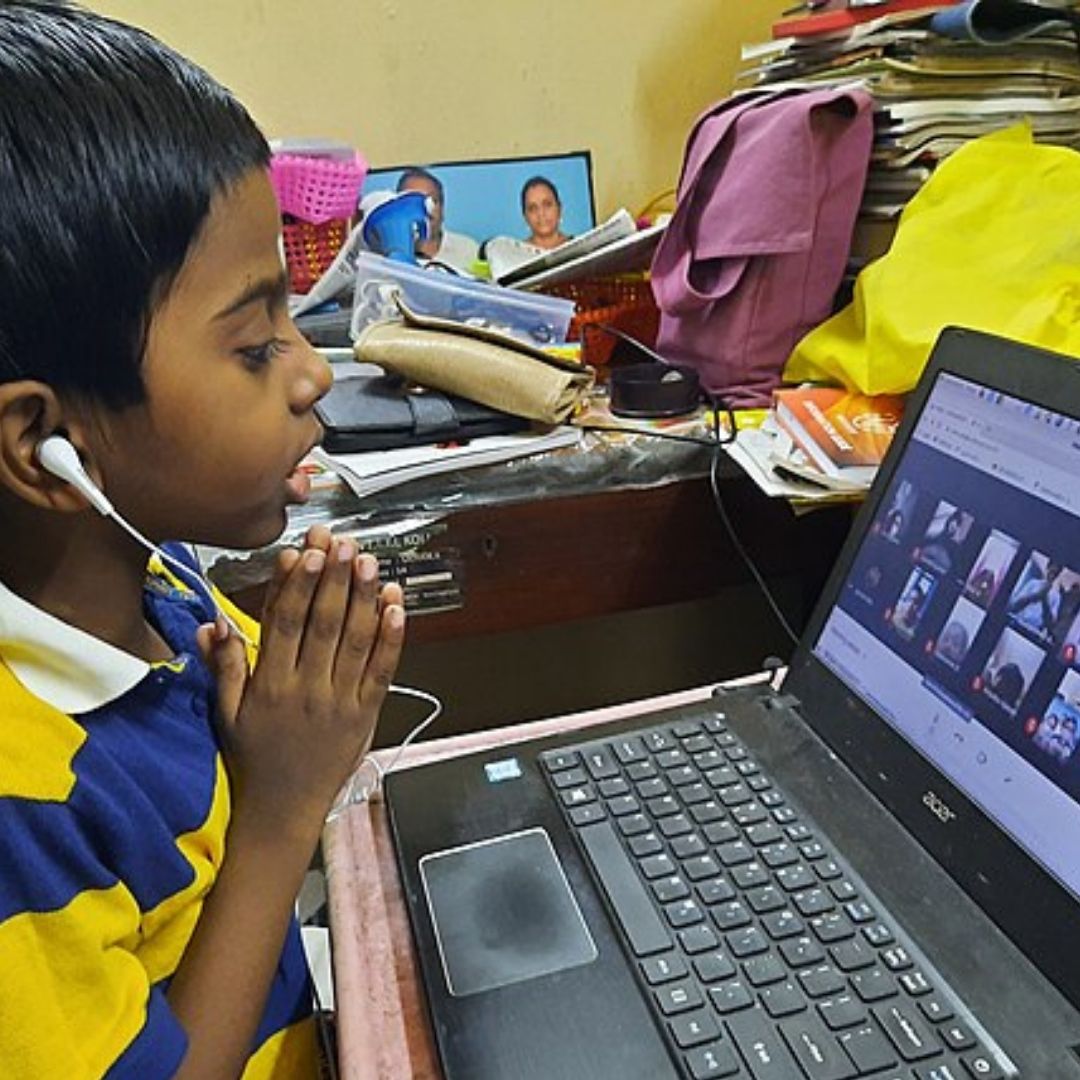
Image Credits: Wikimedia
80% Of Children Did Not Receive Remote Education During COVID-19 Lockdown, Says National Survey
Writer: Akanksha Saxena
I am a budding journalist who loves to write stories that have the ability to connect with people.
India, 14 Nov 2021 11:26 AM GMT
Editor : Madhusree Goswami |
A mountain girl trying to make it big in the city. She loves to travel and explore and hence keen on doing on-ground stories. Giving the crux of the matter through her editing skills is her way to pay back the journalism its due credit.
Creatives : Akanksha Saxena
I am a budding journalist who loves to write stories that have the ability to connect with people.
A think tank called 'LIRNEAsia' carried out the survey where they looked into the expanse of digitization in India and its impact on household, education, healthcare, etc.
A digital policy research think tank called 'LIRNEasia' published a survey, stating that remote education was inaccessible to around 80 per cent of children in India. Only 20 per cent of the students who went to schools before the COVID pandemic were able to continue their studies with online classes.
Titled 'Access to Services to During COVID-19 in Digital India', it looked into the 'socio-economic impact of COVID-19 by analysing access to services, including education, healthcare, and work, with a focus on digital technologies.' Apart from mapping the inferences in the three categories, the report published findings of 'internet access and usage' and 'household income' as well.
Inequality Across The Board
In the education category, the survey's findings depended on factors such as socioeconomic status, online medium, teachers' feedback, internet connectivity, and logistical challenges faced by households and schools. Children in urban households had enough resources, because of which they had access to remote learning. Thirty seven per cent of household heads around the country have completed tertiary education (class 1-8) whereas only 11 per cent are uneducated. When it comes to the medium used for online classes, 75 per cent of the students had their work and study material sent to them via Whatsapp, Viber, etc.
However, despite them having the resources, problems still prevailed. Only 55 per cent of the students were able to receive the teachers' feedback online for their work. Internet connectivity also played an important role here. While 64 per cent of households had internet, only 31 per cent were able to attend the classes, while 69 per cent could not do so, mostly due to connection woes. The gap was wider in the poorer homes where over 92 per cent of students did not receive any education because of no internet connection. Not only that, 38 per cent of the children had to drop out of school as well.
The issue persisted from the teachers' end as well. Thirty four per cent of educators found it difficult to adapt to the new normal. It took some time for them to learn how to impart education from a screen instead of in an active classroom. The students' distraction did not help their case as well, as it only did more harm than good.
Education Infrastructure Needs Work
The need of the hour is to improve the existing education policies. Rajat Kathuria, a senior visiting professor at Indian Council for Research on International Economic Relations (ICRIER), told The Telegraph, "Our survey findings confirm the widening of the education divide as several households without internet devices were unable to organize remote learning for their children. Education policy needs much more than network infrastructure for material impact on learning outcomes." LIRNEasia's CEO, Helani Galpaya also added that a balance has to be struck between 'real-time, online and self-directed learning and meaningful feedback' is necessary to bridge the gap.
Also Read: Over 30,000 Children Out Of School In Karnataka, Finds Govt Survey
 All section
All section














